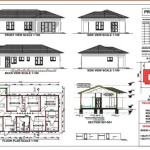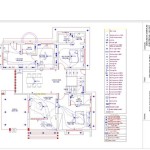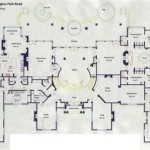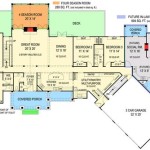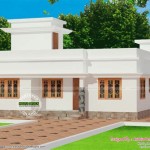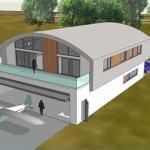Essential Aspects of Basement Floor Plan Design
A well-designed basement floor plan can transform your unfinished space into a functional and inviting area. Whether you're planning a home theater, a guest room, or a home gym, careful planning and attention to detail are crucial. Here are essential aspects to consider when designing your basement floor plan:
1. Determine Your Needs
Before starting the design process, it's essential to determine your needs and priorities for the basement. What do you hope to achieve with this space? Will it be primarily used for entertainment, storage, or as an additional living area? Understanding your requirements will guide the rest of the design process.
2. Assess the Existing Space
Take measurements of the basement and note any structural features, such as support beams, windows, and stairs. Identify areas that may require additional support or modifications to accommodate your desired layout. Also, consider the height of the ceiling and any existing plumbing or electrical lines that may affect your plans.
3. Plan for Storage
Basements are often used for storage, so it's crucial to incorporate ample storage space into your design. Consider built-in shelves, closets, or cabinets to maximize vertical space. You can also create designated storage zones for different items, such as seasonal decorations or bulky sports equipment.
4. Create Functional Zones
Divide the basement space into separate zones based on its intended use. For example, you could dedicate one area for entertainment, another for a guest room, and a third for a home gym. Clearly define these zones through strategic placement of walls, furniture, or room dividers to create a cohesive and functional flow.
5. Consider Lighting
Lighting is essential for creating a comfortable and inviting basement space. Natural light is always preferable, so incorporate as many windows as possible. In areas with limited natural light, use a combination of artificial lighting, such as recessed lighting, pendant lights, and wall sconces, to provide adequate illumination.
6. Plan for Accessibility
Ensure that your basement floor plan is accessible to all occupants. Consider the location of stairs and doorways to minimize obstacles and provide a safe and easy flow of movement. If mobility is a concern, consider installing a stair lift or wheelchair ramp to enhance accessibility.
7. Incorporate Safety Features
Safety should be a top priority in basement design. Install smoke detectors and carbon monoxide detectors throughout the space. Consider adding an egress window in case of emergencies. Ensure all electrical wiring and appliances meet safety codes and are properly grounded.
Conclusion
Designing a basement floor plan requires careful planning and attention to detail. By considering your needs, assessing the existing space, planning for storage, creating functional zones, incorporating lighting, ensuring accessibility, and including safety features, you can transform your basement into a valuable and enjoyable addition to your home.

How To Plan For A Finished Basement Chiefblog

Basement Floor Plans How To Make A Good Plan For House Layout

Basement Floor Plan

Basement Floor Plans Types Examples Considerations Cedreo

Basement Floor Plans Types Examples Considerations Cedreo

The Basement Floor Plan Making It Lovely

How To Create A Great Living Space For Finished Basement Layout

Basement Finishing Plans Layout Design Ideas Diy

Basement House Plans Next Level Homes

Basement Floor Plans Types Examples Considerations Cedreo

